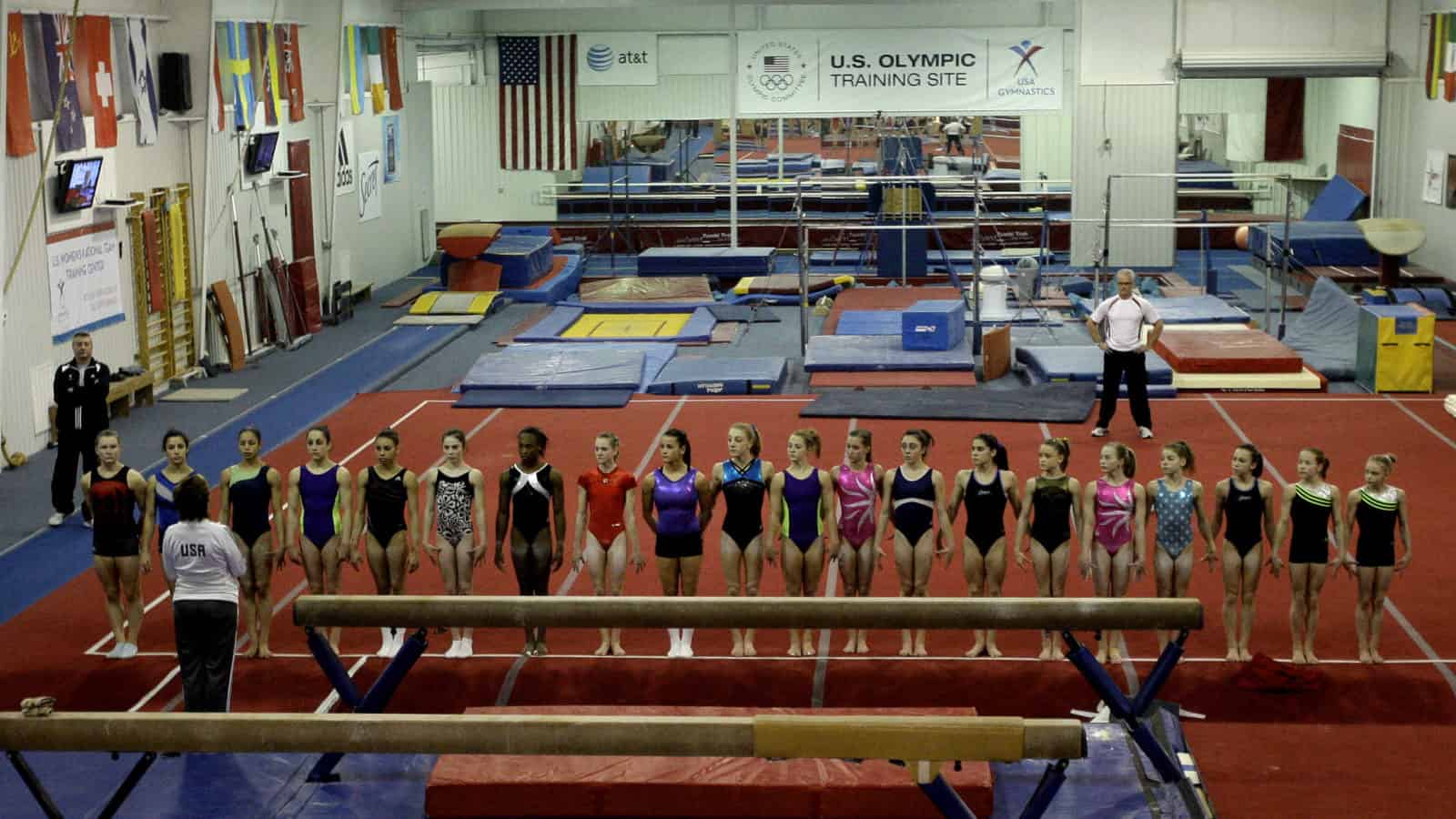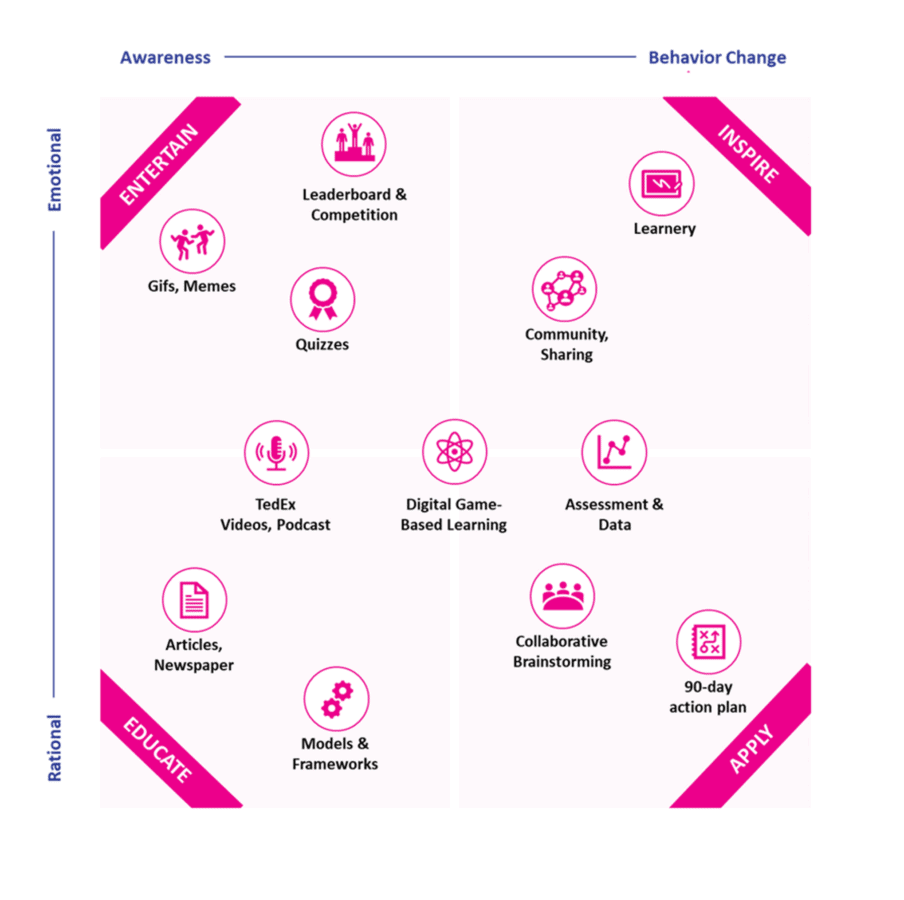“If you want to go fast, go alone. If you want to go far, go together.”
This is a famous African proverb that has a lot of relevance in real life.
Going along eliminate the need to match up with others to reach the same destination.
On the flip side, if you truly want to go far, you should take a lot of other people along with you.
This is more like a team working together to reach the same goal.
Of course, you need a lot of dedication and patience to reach the goal.
Alongside, when you are working in a team, you need to have quite a lot of people working together and each of the people working in the team has got their own opinions, and they would be sincerely counted.
And isn’t this just like many of us who work in any company that has more than one person?
This is why you don’t see companies sending executives on solo retreats to work on next year corporate strategy or work in isolation to resolve a project issue.
But when it comes to learning & development, especially digital learning, individuals are still expected to complete them solo.
This is a huge disconnect in an eventual way on how work is conducted – in teams.
Take it away, Jose Mourinho
The best epitome of this lesson is best communicated by football coach Jose Mourinho.

In Netflix’s new docuseries The Playbook: A Coaches Rules for Life, he emphasised that he does not coach football players. He coach football teams.
When Mourinho was at Real Madrid, they had a great team, including one of the greatest players – Cristiano Ronaldo.
He is well aware of their special individual talents but “without the team, they cannot succeed.”
It is not just coming from a single successful football coach. Multiple studies have shown that people work better in teams.
A 2009 MIT Sloan study showed that virtual teams actually perform better than teams working in the same location — that is, if they have the proper communication and collaboration tools.
Companies are already moving in the right direction by adopting collaboration tools such as Trello, Mural, Asana and Monday.
What if this is extended into learning & development?
Team > Individual
In 1976, Bela and Martha Karolyi made history when their protégé, Nadia Comaneci, became the first-ever Olympic gymnast to score a perfect 10.0 in her routine.
But their legacy didn’t end there.
After defecting from communist Romania to America, the Karolyis set out to accomplish an even bigger goal: Coach the US gymnasts to win their very first gold medal as a unified Olympic team.

After returning from the Barcelona Olympics with only a bronze, the Karolyis realized they’d been making a huge mistake.
The gymnasts had been training separately with their own coaches, and only came together as a team at the actual Games.
That’s when Martha decided to dramatically revamp their strategy.
Before the centennial Olympics in Atlanta, she insisted that all seven athletes meet and train at a team camp for two weeks.
“That was the first moment when the US had a program that put team orientation in front of the individual success,” Martha said in NBC’s documentary, Karolyi. “If the team is doing good, it’s very good for all the individuals. So your goal should be to be part of this team because then you will become successful.”
Unsurprisingly, that was the year they won the gold medal.
Not another 1-hour video
Covid19 has made learning & development difficult since we are not able to be in the same venue to go through the same training.
With the prevalence and success in many organisations in going partial or fully remote, the days of being in office 5 days a week may never come back.
Many organisations either do a rudimentary conversion of their offline learning to online.
So the previously 2-hours group training on communication skills become a 2-hours video that you need to watch without falling asleep.
The digitalisation of learning material is not as simple as scanning the paper document and turn it into a pdf.
It requires dedicated effort to make it more bite-sized to encourage consumption and completion.
And to add in pop quizzes to reinforce learning.
What did you just say?
Then there is another problem – knowledge retention.
In the late 19th century, German psychologist Hermann Ebbinghaus coined the forgetting curve theory.
It professes that as much as 90 per cent of information (gained from learning) is forgotten within 30 days, and 70 per cent of that loss happens within one day
Imagine spending $1mil on training only to retain $100,000 of value.
Talk about a poor return on investment!
Fortunately, recent research has shown that “Gamification” of learning can boost educational outcomes.

For group training to be effective in the new normal, it not only has to deliver high results and credible ROI but also to be delivered in a fun and engaging manner for all the learners.
This is the focus area for Aeqlia – the latest entrant in the Learning Tech space.
They combine the best of both worlds by being at the intersection of experiential learning and gaming, technology and data, and behaviour science and research.

By using personalized team development journeys with team assessment, Aeqlia can diagnose team needs and measure team effectiveness.
The use of multiplayer online team games allows teams to learn and experience the behaviours of high performing and agile teams.
This is coupled with team coaching workshops to ensure teams apply the learnings back at work.
Beyond just fun and engaging for learners, there is tonnes of science behind it that is based on 30+ years of research on building high performing teams – courtesy of GDQ Associates, a leading research company.
Avengers, assembled
According to GDQ’s research, there are 4 stages of team development:

- Dependency and inclusion. The purpose of stage one is to create a sense of belonging and the beginnings of predictable patterns of interaction.
- Counterdependency and fighting. The purpose of stage two is to develop a set of goals, values, and operational procedures.
- Trust and structure. Stage three is characterized by more mature negotiations about roles, organization, and procedures. Also, members work together to solidify positive relationships.
- Work and productivity. At stage four, workgroups become teams. Leaders and members need to do certain things to keep performing at a high level, such as clearly defining their problems and being evaluated regularly.
Teams at stage four are shown to have more satisfied customers and managers, have more surviving patients in intensive care, have members that experience a higher level of work satisfaction and lower level of emotional exhaustion and a greater ability to adapt to agile ways of working.
The team assessment feature in aeqlia is able to cater to the stage that the team is at and work around the maturity level of the team.
All delivered digitally & remotely via the unique use of their Miki Island digital experiential learning program that combines business application workshop to help the team improve their performance throughout a 100-day sprint.




